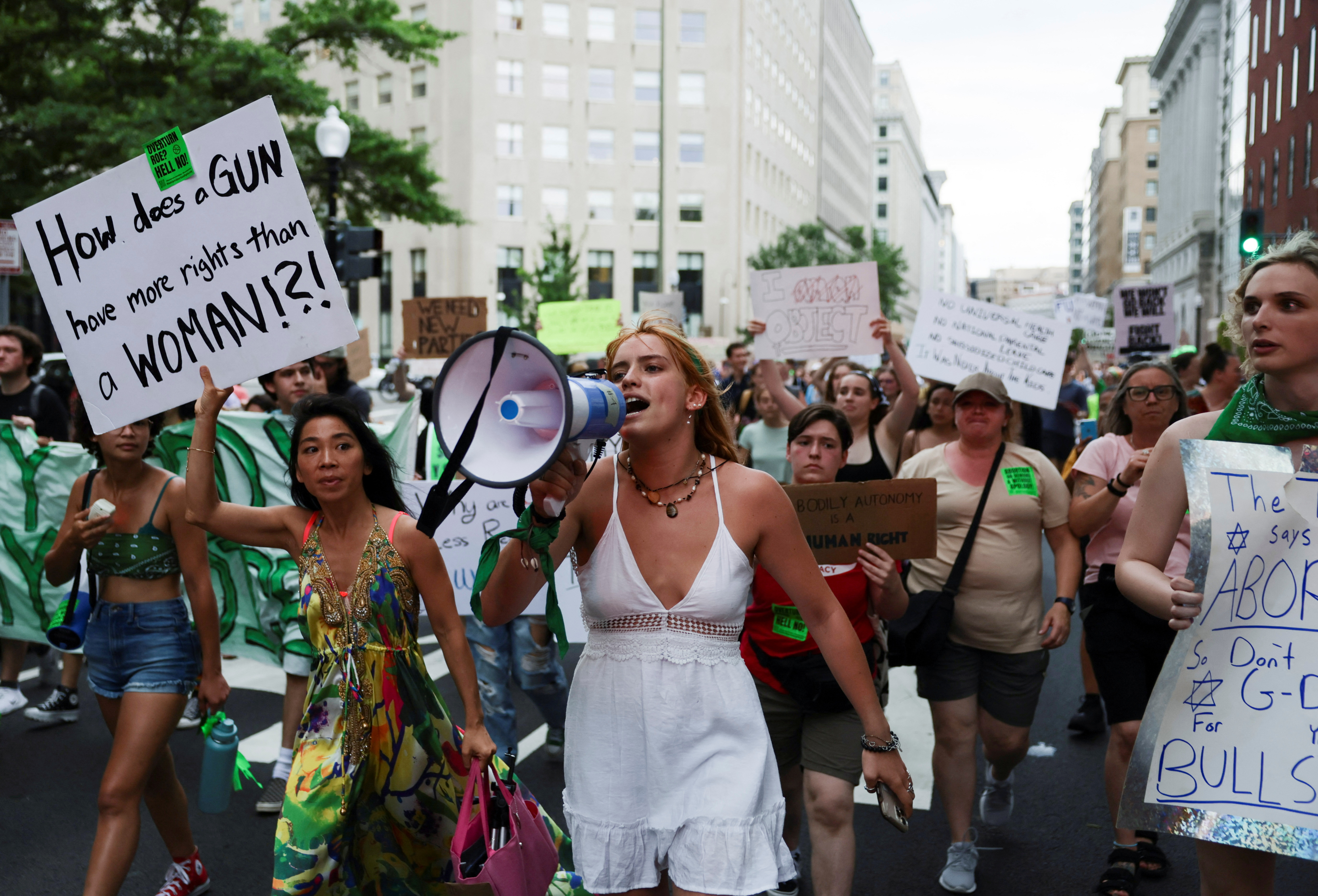What will US abortion sanctuary networks look like?
What will US abortion sanctuary networks look like?
Volunteers, lawyers and non-profits are creating sanctuary networks for people seeking abortions in the United States.
Protesters demand abortion rights in the US

?resize=770%2C513
In June, the US Supreme Court overturned Roe v Wade, ending the constitutionally-protected right to abortion in the country and spurring mass protests [File: Michael A. McCoy/Reuters]
By Hilary Beaumont
Published On 11 Jul 202211 Jul 2022
Los Angeles, California, US – It was 1969 and Sunny Chapman, then 19, needed an abortion. It was four years before Roe v Wade would enshrine abortion as a constitutional right in the United States, and Chapman had heard about the Jane Collective, a feminist network that provided underground abortions in Chicago. “I called Jane,” she said. “You know you’re in good hands, you know you’re going to be OK. But it’s still terrifying.”
. . . .
In June, the US Supreme Court overturned Roe v Wade, allowing states to set their own abortion laws. As a result, 26 — about half of all US states — are likely to outlaw or restrict abortion in the coming weeks and months, according to the Guttmacher Institute, a reproductive rights advocacy group. In response, volunteers, lawmakers, lawyers and activists are creating pathways similar to what the Jane Collective did in the 1960s. Already, dozens of abortion funds exist across the country, and states are passing bills to add more sanctuary networks. “They just need us to be ready to help them,” said Chapman, who told Al Jazeera she is thinking of ways to aid the many support groups that are springing into action. “They need funding, and they’ll get it – because we’re all mad.”
. . . . . .
Three years ago, Lisa, based in Texas, and Vlada, in Oregon, started the nationwide network in which volunteer “aunties” help “nieces” who are in need of abortions. The co-founders requested that only their first names be published because they have faced threats. “You have a lot of unstable people in the world who think it’s their mission to target us,” Lisa told Al Jazeera. Under Texas law, she also runs the risk of being sued for helping people access abortions. “It doesn’t bother me,” she said. Last fall, Texas banned abortions performed after a fetal heartbeat is detected, at about six weeks of pregnancy, making abortion inaccessible for most pregnant people living in the state. “Once Texas practically outlawed abortion last September, we became very busy,” Lisa said.

?w=770&resize=770%2C524
Despite experiencing an underground abortion, which she knows was risky, Chapman said, “Today, it’s way, way more dangerous and scary.” She pointed to recent violence against pro-abortion rights protesters, and said the Jane Collective did not have to worry about mass shootings and automatic weapons. “You didn’t have to deal with this crazy violence then.” She knows she is part of a movement that will do whatever it takes to help pregnant people get the care they need. “I’ll donate money, I’ll do whatever I can do to help women get abortions, and there are millions of women like me across the country,” she said. “I’ve fought this battle before and I’ll do it again.”
https://www.aljazeera.com/news/2022/7/11/what-will-us-abortion-sanctuary-networks-look-like
 ?resize=770%2C513
?resize=770%2C513
 ?w=770&resize=770%2C524
?w=770&resize=770%2C524